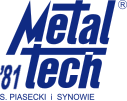BEST CORROSION PROTECTION
Our Mechanical Plants and Steel Structure Fabrication Plant use specific corrosion protection processes during production. These processes are based on the requirements of our clients and on the materials themselves, and their aim is to ensure maximum possible durability of our products. This ensures that our products are excellently protected to guarantee their good appearance, strength and weather resistance.
At METALTECH, we use the following corrosion protection measures:
HOT-DIP GALVANISING is a state-of-the-art, cutting-edge process that protects steel and iron alloys against rust. This high quality is owed to several specific properties of zinc and steel. The zinc coating forms an alloy with the steel surface – alloy of iron and zinc at their interface, covering all internal and external surfaces. This ensures that the coating is durable and resistant to environmental factors and mechanical damage. During the galvanising process, the item/product is submerged in liquid zinc, which is prepared earlier during a series of interrelated chemical treatments. This ensures the durability of the coating and, consequently, the item itself ranging from 20 to 65 years, depending on the corrosivity of the environment.
POWDER COATING is a state-of-the-art method of applying paint coating that polymerises at 200°C. Steel components are prepared for painting by shot blasting or chemical treatment. Then, a layer of powder (depending on paint type and colour) is applied with a gun and cured in the oven at the above-mentioned temperature. The DUPLEX SYSTEM is a state-of-the-art corrosion protection system that has been used for many years at our plants. It is a combination of the anti-corrosive action of the zinc coating with the decorative values of paint coating. The period of effective corrosion protection provided by this system is on average twice as long as the combined lifecycles of the zinc coating and paint coating..
WET PAINTING – painting of large-sized components, including steel civil structures, with airless sprayers and pressure pots for paint spraying onto previously prepared surfaces. The surfaces of the structures to be painted are prepared by abrasive blasting (shot blasting) in ample-sized shot blasting chambers (turbine shot blasters and shot blasting chambers). All processes are continuously monitored and tested using a large number of measuring and testing devices.
